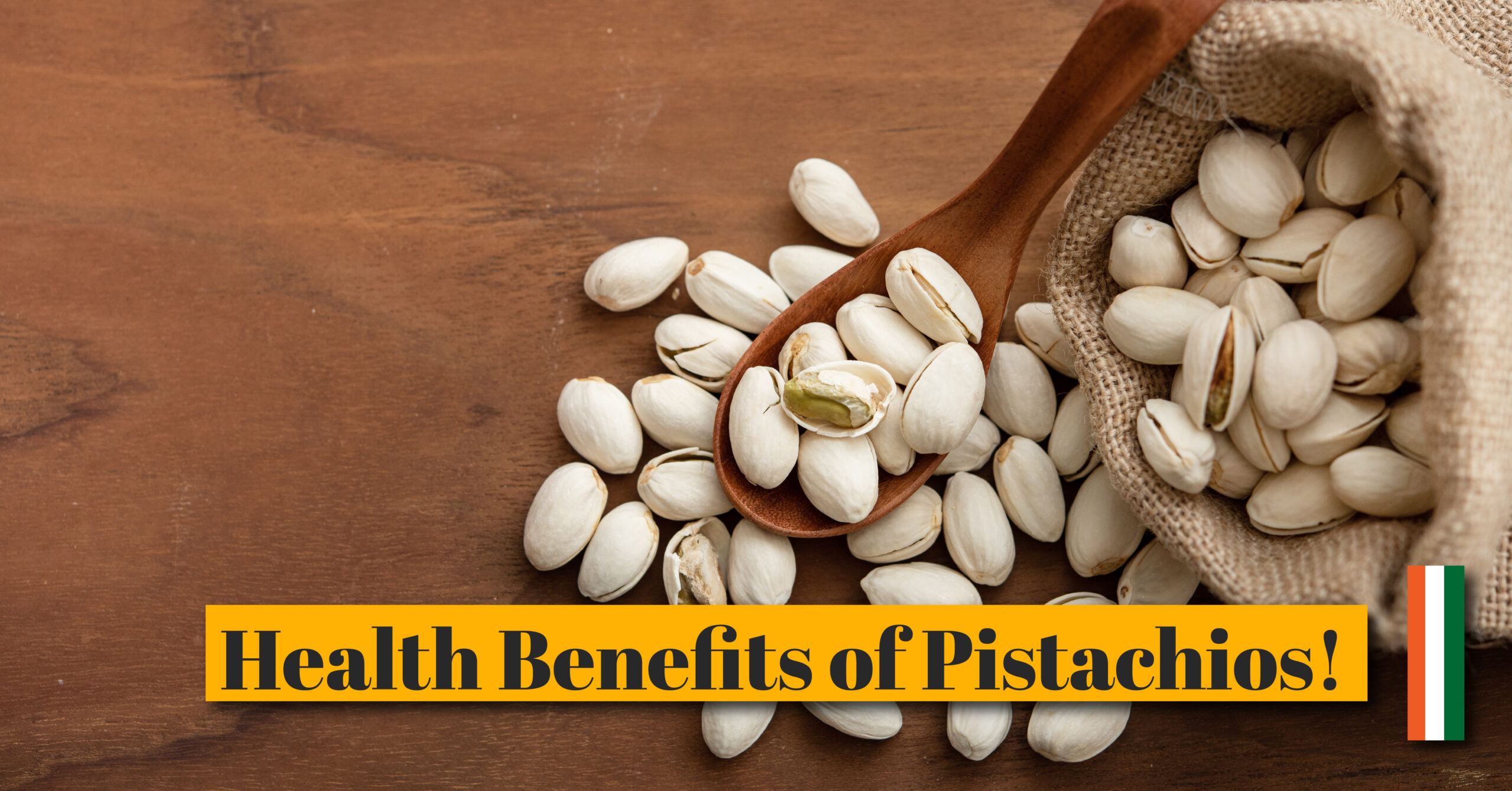Introduction:
When it comes to history and flavor, one specific green treasure from the nut family stands out: the pistachio. Pistachios are Middle Eastern nuts that have gained popularity throughout the world for their distinct flavor, health advantages, and many applications. We’ll go on a delicious journey in this blog post to learn more about the intriguing history of pistachios, including their origins, health advantages, culinary uses, and the environmental effects of their growth.
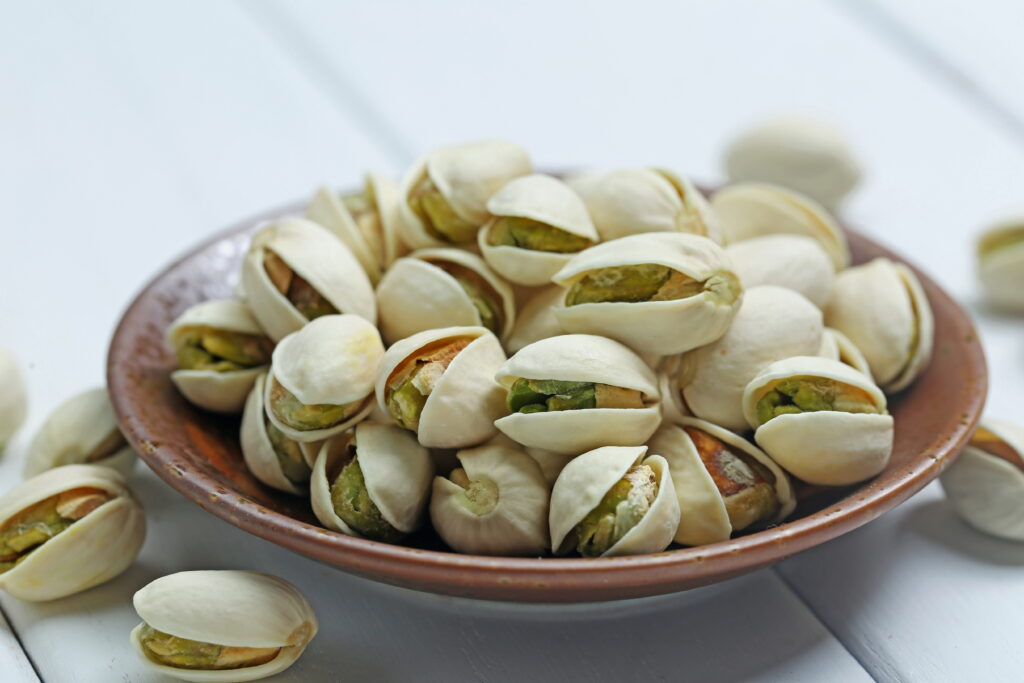
The Origin Story:
Pistacia vera, the scientific name for peanuts, has a long and illustrious history that extends back thousands of years. These tiny, tear-shaped nuts, which are thought to have originated in Iran and other dry parts of the Middle East, were an important element of the diets of prehistoric peoples. Pistachios were reportedly a favorite food of royalty and even a representation of prosperity and luxury, according to legends and historical records.
Iran continues to be the world’s top producer of pistachios, with the US, Turkey, and Syria following closely after. Pistachios are a remarkably adaptable and resilient crop because of its widespread cultivation and ability to thrive in a variety of climates and soil types.
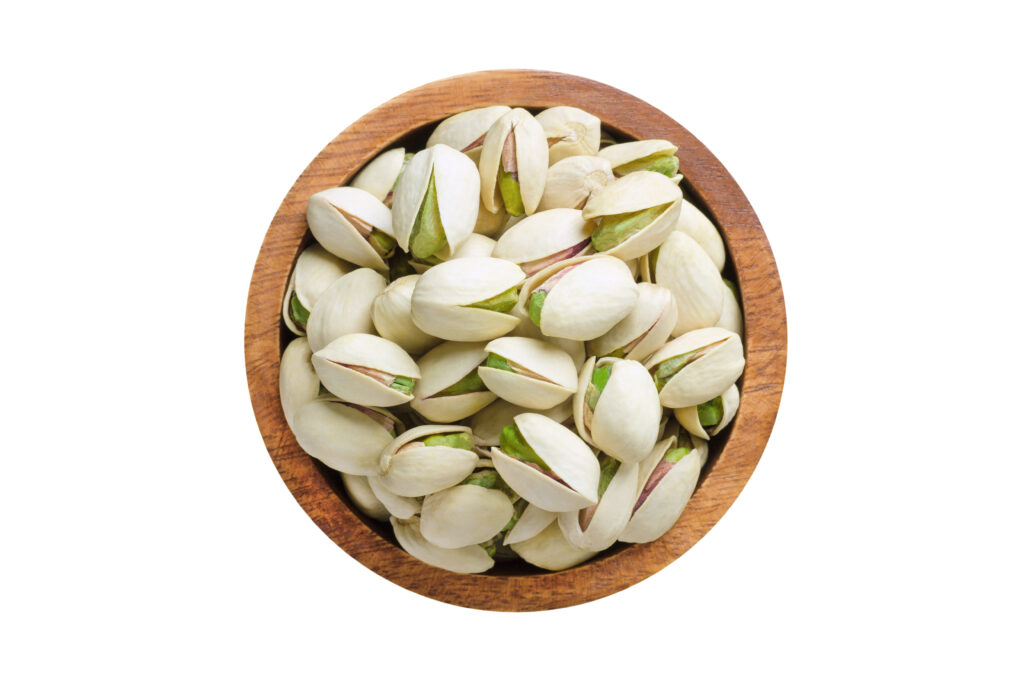
Nutritional Powerhouse:
Pistachios have a delicious flavor, but their nutritional value only heightens their appeal. Nutritious fats, proteins, dietary fiber, vitamins, and minerals abound in these nuts. Pistachios are a healthy snack since they include a variety of nutrients in just one serving.
Particularly well-known for their heart-healthy qualities are pistachios. They have fats that are both polyunsaturated and monounsaturated, which support a good lipid profile. These nuts also include a lot of antioxidants, such lutein and zeaxanthin, which are very important for maintaining eye health.
Pistachios have fewer calories than other nuts, which will appeal to those who are concerned about their weight. They are a great option for people trying to control their weight because of their high fiber and protein content, which helps to create a feeling of fullness.
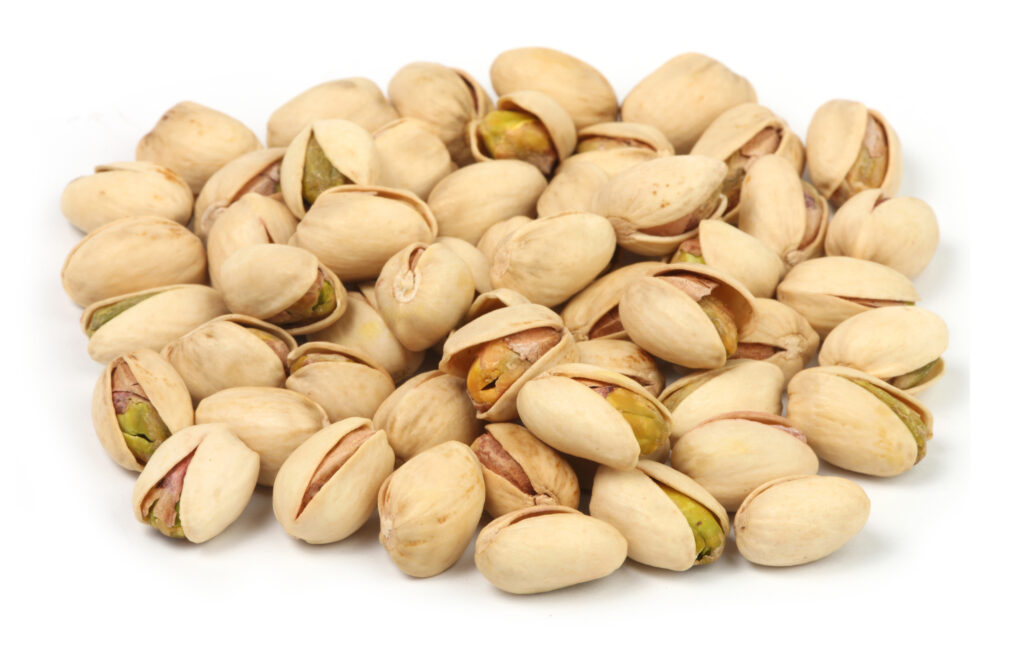
Culinary Wonders:
Pistachios are significantly more useful in cooking than just a simple nibble. These nuts are used to offer a wonderful crunch and distinct flavor profile to a wide variety of meals. Pistachios enhance the taste experience in a variety of international cuisines, whether they are sweet or salty.
Pistachios are frequently the prominent ingredient in both savory and dessert dishes in Middle Eastern cuisines. They add a rich, nutty flavor to meat and rice recipes, and are a main ingredient in the well-known sweet pastry baklava.
Pistachios are appreciated in many ways in Western cuisines. Pistachios that have been crushed are fantastic as a crunchy salad topping or as a coating for meats. A tasty substitute for conventional nut butters, pistachio butter is a creamy spread created from pulverized pistachios.
Pistachio ice cream is a frozen treat that should not be overlooked. This fro yo’s vivid green color is evidence of how many pistachios are present, and ice cream lovers love its rich, nutty taste.
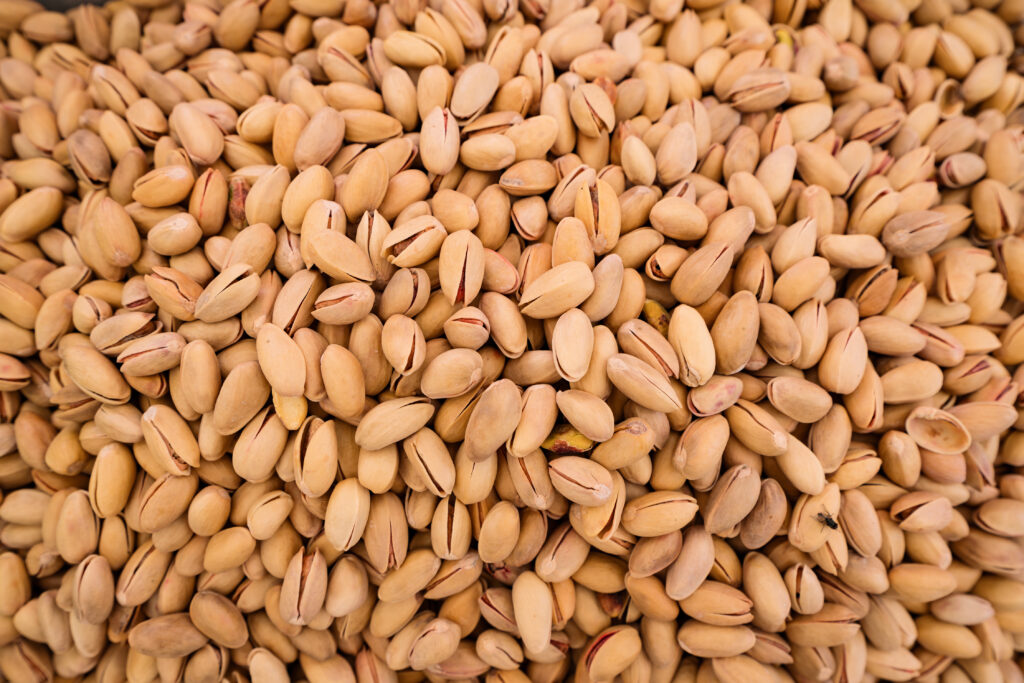
Health Benefits:
Pistachios are a wise dietary choice for anyone trying to improve their overall health because of their many associated health advantages.
- Heart Health: Pistachios are a heart-healthy choice, as was previously established. Their fats, both mono and polyunsaturated, help to lower harmful cholesterol levels, which lowers the risk of heart disease.
- Weight Management: Pistachios are high in calories, but their protein and fiber content promotes fullness, which makes it simpler for people to control their overall caloric intake and maintain a healthy weight.
- Blood Sugar Control: Because pistachios have a low glycemic index, they don’t significantly affect blood sugar levels. Because of this, they are a good snack for people who have diabetes or are trying to control their blood sugar levels.
- Rich in Antioxidants: Pistachios contain antioxidants including vitamin E and carotenoids that help shield cells from harm from free radicals. This improves general health and could lower the chance of developing chronic illnesses.
- Eye Health: Lutein and zeaxanthin, two antioxidants found in pistachios, are known to promote eye health by reducing the risk of age-related macular degeneration and cataracts.
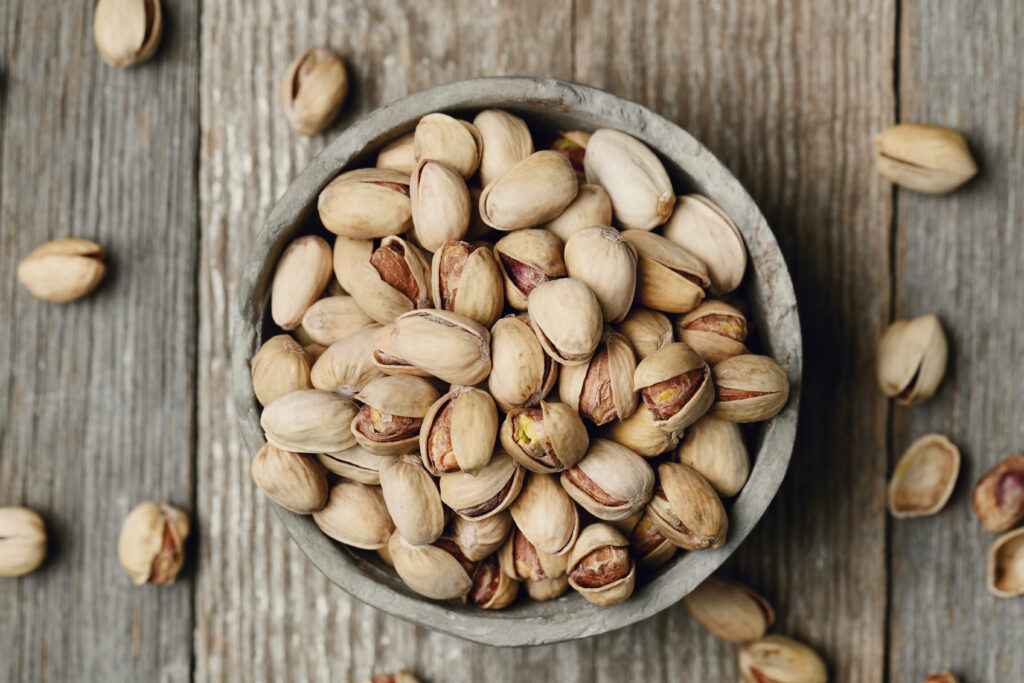
Environmental Impact:
Even though pistachios have many health benefits for people, it’s important to think about how their production affects the environment. Pistachios, like many other crops, need water to grow. The production of water-intensive crops like pistachios can present environmental issues in areas where water scarcity is a concern.
Water conservation strategies, enhanced irrigation technologies, and sustainable farming methods are being employed to tackle these issues. The development of drought-resistant pistachio varieties and the installation of effective irrigation systems will help ensure a more sustainable future for pistachio farming in areas with limited water supplies.
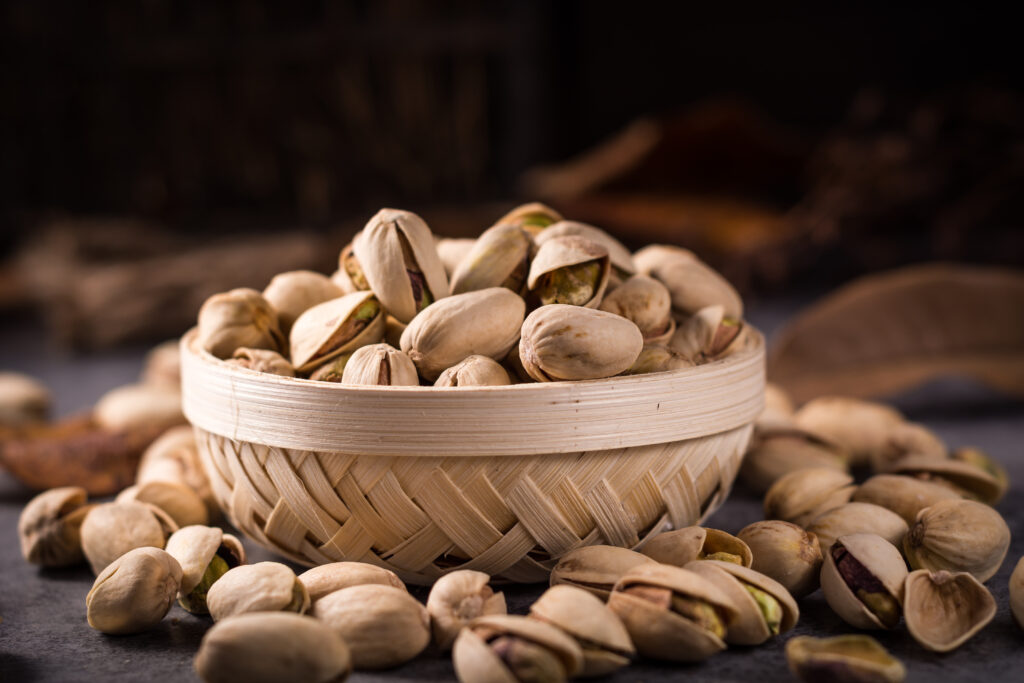
Conclusion:
Pistachios have earned their status as one of nature’s treasures with their lengthy history, numerous nutritional advantages, and adaptability in the kitchen. These tiny green nuts have pleased palates and improved the wellbeing of individuals who have enjoyed them from ancient times to the present. While we enjoy the distinct flavor and health advantages of pistachios, let’s also take into account the environmental factors involved in their production. By doing this, we can guarantee future generations have a sustainable and abundant future and continue to enjoy this wonderful beauty of nature.

